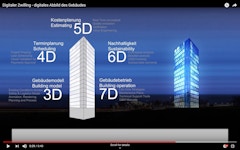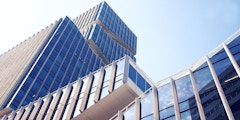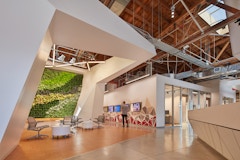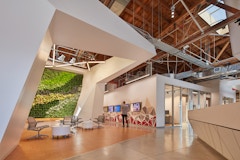65 results
-
The conventional approach to specifying dimensional tolerances in architecture and construction is inadequate in the theater of premanufacturing…
-
Facade Maintenance Access
- Paper by Carmen Chun, MEng, P.Eng., LEED® AP, Associate Leonard Pianalto MSc (Civil), P.Eng., LEED® AP, FEC, Managing Principal
Facades are an architectural feature and an integral part of the building enclosure. To ensure that the facades continue their function, they must be… -

Preserving a Historic Facade
- Paper by Maria Mohammed, S.E. · John Fidler, RIBA, Intl Assoc AIA, FRICS, FSA, FRSA, FIIC, FAPT
Environmental and socio-economic benefits of sustainable preservation have become apparent most recently in the restoration of the historic former
-

FTI Announces New SKINS Podcast
- Announcement
FTI’s Mic Patterson will be interviewing industry thought leaders on wide-ranging topics relating to buildings and their skins. Upcoming episodes will feature conversations on Passive House, tall buildings and the work the DOE is doing with windows and facades.
-

Sustainable Materials
- Paper by Michael C. Mulhern P.E., President
Stainless steel has been successfully used in building envelopes since the completion of the Chrysler building in 1928. Today, it is used as both a… -
New Course on Building Façade Design Developed at Oklahoma State University
- Paper by Bodhisatta Hajra, Assistant Professor of Architectural Engineering John Phillips, PE,
A façade, which is also called a ‘secondary structural system’, typically separates the exterior from the interior of a building. In recent times,… -

Digital Lifecycle of Building Envelopes
“The digital transformation will change everything” – with this quote in mind a deep look into the current facade business will be given with a
-

Event Passed
ANFA 2021 Call for Presenters
The ANFA Conference will explore, from a scientific basis, the range of human experiences that occur in context with elements of architecture, both exterior and interior. Abstracts will be accepted until February 28, 2021.
Industry Event by Academy of Neuroscience for Architecture
-

Innovations with Glass
- Paper by Jens Schneider · S. Müller-Braun · T. Peters · M. Schuster
Glass has become a popular building material that is used not only for windows but also as a load-bearing material. New dimensions of glass panes in
-
Reglaze or Replace?
- Paper by Angel Ayón, AIA, LEED AP · Laura Boynton, AIA, LEED AP
Originally known as The Master Building, 310 Riverside Drive in Manhattan's Upper West Side is a 28-story tower completed in 1929 as an apartment
-

Bringing an Icon Into the Future: Willis Tower
- Paper by Stephen Katz, Technical Director
Few buildings are as iconic as Willis Tower. Generations of Chicagoans have a collective memory of this building playing a role in their entire… -

The Tectonics of Flimsiness
- Paper by Timothy Brown AIA NCARB CSI, Associate Professor
Architecture has traditionally celebrated the joining of two building components or materials. Joinery serves as a key site for architectural… -

Envelope For Service
- Paper by Annalisa Andaloro · Miren Juaristi · Stefano Avesani · Giulia Santoro · Matteo Orlandi
Envelope-for-Service (E4S) is a novel business model developed with the aim of converting the building façade from a traditionally traded good to a
-
Integrated Energy Analysis
- Paper by Greg Verabian · Saurabh Shrestha · Laure Michelon
Energy codes across the country are progressively getting stricter and increasing the threshold for a baseline building’s energy performance.
-

Event Passed
The ABCs of ZNE
The journey to a zero net energy (ZNE) future starts with renovating the current paradigm of building design. The way buildings are designed today needs a retrofit in thinking so new projects meet the challenges of the global climate crisis.
Industry Event by Verdical Group
-

Event Passed
The ABCs of ZNE
The journey to a zero net energy (ZNE) future starts with renovating the current paradigm of building design. The way buildings are designed today needs a retrofit in thinking so new projects meet the challenges of the global climate crisis.
Industry Event by Verdical Group
-

Event Passed
The ABCs of ZNE
The journey to a zero net energy (ZNE) future starts with renovating the current paradigm of building design. The way buildings are designed today needs a retrofit in thinking so new projects meet the challenges of the global climate crisis.
Industry Event by Verdical Group
-

The ABCs of ZNE
- Event by Verdical Group
The journey to a zero net energy (ZNE) future starts with renovating the current paradigm of building design. The way buildings are designed today needs a retrofit in thinking so new projects meet the challenges of the global climate crisis.
-

The ABCs of ZNE
- Event by Verdical Group
The journey to a zero net energy (ZNE) future starts with renovating the current paradigm of building design. The way buildings are designed today needs a retrofit in thinking so new projects meet the challenges of the global climate crisis.
-

The ABCs of ZNE
- Event by Verdical Group
The journey to a zero net energy (ZNE) future starts with renovating the current paradigm of building design. The way buildings are designed today needs a retrofit in thinking so new projects meet the challenges of the global climate crisis.
